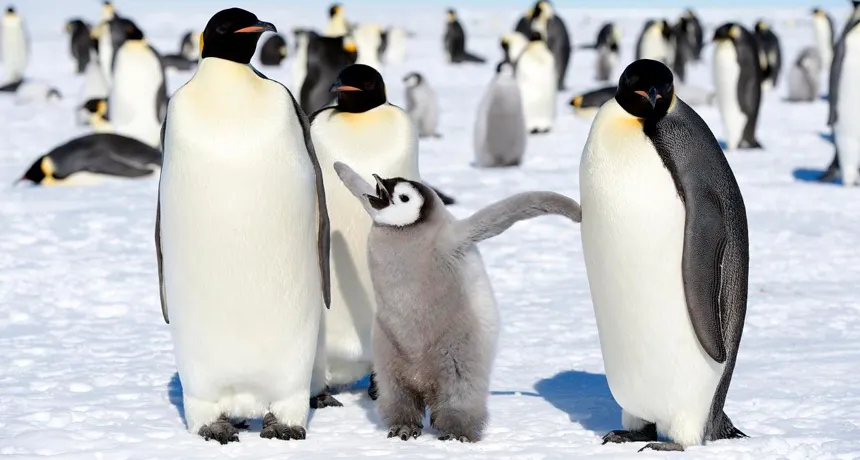Octomom and six other extreme animal parents

Before an adorable baby emperor penguin is born, it spends nine weeks tucked away in an egg balanced on dad’s feet.
Christopher Michel/Flickr (CC BY 2.0)
- More than 2 years ago
Last week came news of a deep-sea octopus (Graneledone boreopacifica), nicknamed “Octomom,” that had been spotted brooding her eggs for a record-breaking 53 months. Whether that made this octopus a great mother, though, is questionable. After all, as Bethany Brookshire noted in Science News,
Most female octopuses lay only one clutch of eggs, staying with the eggs constantly and slowly starving to death while protecting them from predators and keeping them clean. When the eggs hatch, the female dies.
Perhaps Octomom was simply trying to avoid death.
It’s rather silly to apply human standards for good parenting to critters. And looking at the animal world, it’s pretty easy to find moms and dads that go to extreme lengths to give birth and raise their young. Here are six more examples:
European brown hares
These relatives of bunnies can develop a second pregnancy while already pregnant, researchers reported in Nature Communications in 2010. That means there’s no wait between giving birth and getting pregnant again. And the back-to-back pregnancies can increase a female hare’s fecundity, resulting in larger litters and 35.4 percent more babies hares per breeding season.
Emperor penguins
After a female lays a single egg, she returns to the ocean to feed for nine weeks. Caring for that egg is the responsibility of dad, who balances the unhatched baby on his feet as he huddles and shuffles with all the other males. When mom returns, her partner will have lost half his body weight.
Suriname toads
These South American amphibians may look somewhat drab, but when mom gives birth, well, you’ll find the videos either fascinating or frightening. After female toads lay their eggs, a male fertilizes them and lays them on the female’s back. The skin on her back then grows over the eggs, enclosing each in a pocket. When the baby toads hatch, they emerge through mom’s skin.
Elephants
The massive pachyderms hold the record for longest mammal pregnancy at 640 days on average, and up to 680 days — nearly two years. (The record for longest animal pregnancy, at 48 months, is held by a salamander.) Such an extended pregnancy is made possible by a unique quirk of biology that keeps hormones flowing, researchers reported in the Proceedings of the Royal Society B in 2012. That lets an elephant fetus grow enough to emerge big and brainy enough to have a better chance of survival.
Stegodyphus lineatus spiders
Dedication can kill a parent. After this white-and-gray European spider gives birth, the mom feeds the young regurgitated liquid and eventually her own body. There’s a payoff for such sacrifice: The more she gives, the bigger her babies grow. That’s likely to give the offspring a better chance at success in life, researchers reported in Oikos in 2005.
Orangutans
Humans may be legally responsible for their offspring for 18 years, but parenting doesn’t require constant attention to the kid for all that time. And humans are usually able to juggle have more than one kid at a time. An orangutan mom, though, averages eight years between births, letting her devote herself to raising that one baby. She’ll carry her kid for five years and breast-feed him for up to eight. That gives mom plenty of time to teach the young one where to find food, how to build a nest for sleeping and generally everything he needs to know about how to be an orangutan.






